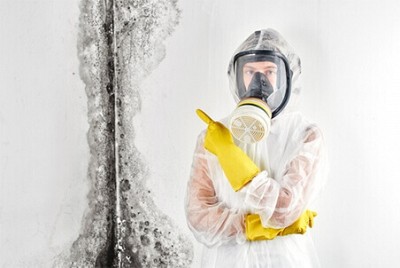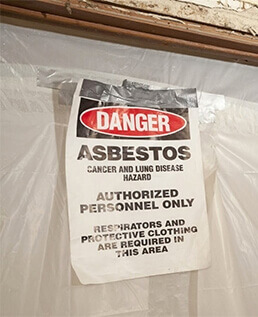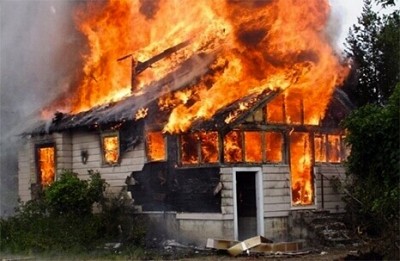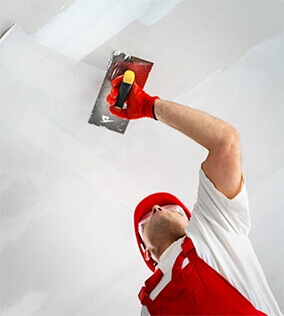Why You Should Never Conduct DIY Asbestos Removal
Posted in Asbestos Removal, on October 09, 2024
When it comes to asbestos removal in Toronto, it is best to leave the work to the professionals. Many home and building owners may be tempted to conduct removal themselves so that they can save on asbestos removal costs. However, saving money is not worth the risk. Asbestos is a highly toxic material that is very dangerous to work with. This is why it is strongly recommended that homeowners do not attempt to disturb asbestos. Professional remediation teams have the skills and knowledge available to remove asbestos without any health or safety complications. Disturbing asbestos without the proper equipment or procedures can make the problem much worse. If you suspect you may have asbestos, reach out to the expert remediation team at Canada’s Restoration Service. Contact us today for a free estimate!
Read on to learn more about why you should never attempt to conduct DIY asbestos removal.
Health Risks
.jpg) One of the main reasons why DIY asbestos removal is highly discouraged is because of the adverse health risks associated with doing so. Asbestos exposure is extremely dangerous due to how toxic the substance is. If you even attempt to uncover asbestos, you can accidentally touch it the wrong way. When this happens, you may release asbestos fibres into the air around you, putting you and those in your home at risk. When inhaled, asbestos can cause severe respiratory illness. Prolonged asbestos inhalation can result in:
One of the main reasons why DIY asbestos removal is highly discouraged is because of the adverse health risks associated with doing so. Asbestos exposure is extremely dangerous due to how toxic the substance is. If you even attempt to uncover asbestos, you can accidentally touch it the wrong way. When this happens, you may release asbestos fibres into the air around you, putting you and those in your home at risk. When inhaled, asbestos can cause severe respiratory illness. Prolonged asbestos inhalation can result in:
- Poor Respiratory Function: Those affected can experience prolonged coughing, wheezing, shortness of breath, and chest tightness. This can progress into disease if not treated.
- Asbestosis: Asbestosis is a chronic lung disease caused by inhaling asbestos fibres, leading to inflammation and scarring of lung tissue, which can result in persistent cough and shortness of breath. The condition typically develops over many years, with symptoms worsening progressively as lung capacity diminishes.
- Lung Cancer: Lung cancer, significantly linked to asbestos exposure, presents with symptoms such as persistent cough, chest pain, and weight loss, particularly in individuals who smoke. The risk of developing lung cancer increases dramatically for those with a history of asbestos exposure, especially when combined with smoking.
- Mesothelioma: Mesothelioma is a rare and aggressive cancer affecting the mesothelium, primarily caused by asbestos exposure, with symptoms including chest pain, difficulty breathing, and abdominal swelling. It often takes decades to manifest, leading to a poor prognosis due to late diagnosis and aggressive progression.
Avoiding at-home asbestos removal can help prevent serious, life-long diseases and illnesses.
Professional Expertise
The average person does not have the knowledge or expertise necessary to safely test for, uncover, and remove asbestos. Given the toxic and fragile nature of asbestos, particular procedures need to be followed for successful removal.
- If you suspect that you may have asbestos in your home, the first step your restoration team will take is to conduct an inspection and/or asbestos testing. Typically, small samples can be taken and tested to ensure that your infestation is asbestos.
- If your test/inspection reveals that your home has asbestos, you must conduct professional removal.
- Any family members or those living in the building need to be gone during asbestos removal. This is done to protect them from potential asbestos fibre exposure.
- Workers will need to prepare your home for removal. Typically, plastic is used to line the entire area around the asbestos site in order to prevent it from spreading to other areas of the house.
- Each worker will also need to be equipped with the appropriate personal protective equipment. Typically, this includes respirators, disposable coveralls, gloves, and eye protection. This is done to protect workers from asbestos exposure and ensure that they aren’t impacted by loose fibres.
- Only once all of the right precautions have been taken can your restoration team begin the actual removal process. They will have specialized tools and techniques to minimize dust and fibre release. Wetting the materials can usually help reduce airborne fibres. There is also a particular disposal process for the asbestos.
- Once the asbestos is removed from your home, it needs to be cleaned up and disinfected to ensure that there are no fibres left behind.
- It is prudent that you continue conducting asbestos testing even after removal to ensure that it is completely safe.
Overall, the process of removing asbestos safely is extremely complex and time-consuming. Professional expertise goes a long way in keeping you and your family safe. Not to mention the fact that experts have access to industrial equipment that helps streamline the removal process. So, for your safety and the safety of others
Legal Compliance
The Government of Ontario and other provinces across Canada have clearly outlined laws when it comes to asbestos removal. Asbestos is a regulated substance, after all. If home or building owners are aware that they have asbestos, by law, they must have it completely removed in order to create a safe environment for those who live in/utilize the space. This is clearly outlined in Ontario's Occupational Health and Safety Act:
- (10) If the examination mentioned in subsection (8) establishes that the material is asbestos-containing material, or if the material is treated as though it were asbestos-containing material as described in subsection (9),
- the owner shall cause the fallen material to be cleaned up and removed; and
- if it is readily apparent that material will continue to fall because of the deterioration of the fireproofing or insulation, the owner shall repair, seal, remove or permanently enclose the fireproofing or insulation. O. Reg. 278/05, s. 8 (10).
You are legally required to deal with asbestos on your property and ensure that it never causes an issue again. The average person simply does not have the means to effectively do this. Since the government requires effective removal of asbestos, it is best to entrust an expert removal team to tackle the job and prevent legal prosecution.
Reduce Risks with Professional Asbestos Removal in Toronto
It is always best to avoid conducting DIY asbestos removal in Toronto. Asbestos is extremely toxic, and not following the appropriate removal or disposal procedures could result in exposure to the substance. Exposure can increase your risk of numerous respiratory diseases. Professional removal teams have professional-grade equipment and PPE that will ensure that asbestos can be removed without putting anybody at risk. Saving on asbestos removal costs is never worth it, given how serious the risks are. Suppose you spot asbestos in your home, contact Canada’s Restoration Services immediately for prompt removal. Call now for a free estimate!







